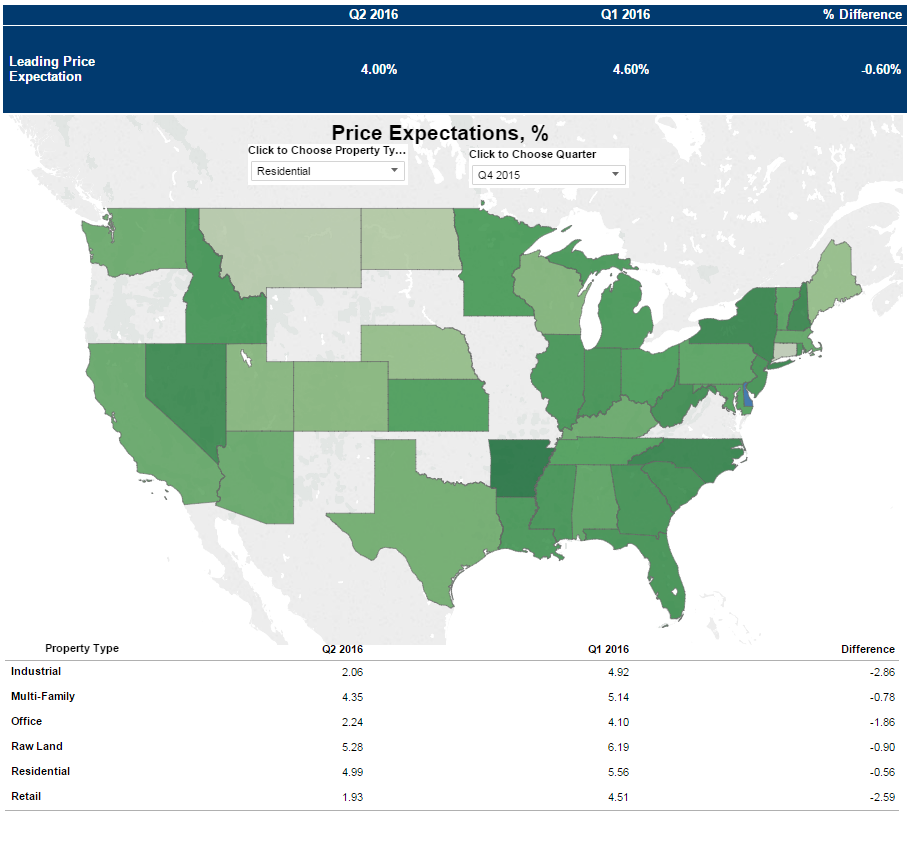
Real estate cycles are generally created by movements in demand not supply. While it is important to track commercial real estate performance through various cycles and divergent trends, patterns of performance are impacted not just by supply and demand, but as much by the quality of assets and portfolios. And is risk a factor? Do investors focus on volatility relative to how their CRE portfolios have performed over time? Do they view their exposure to a particular sector, asset class or region, measuring risk given a certain probability on a current basis or historically?CPPI™ the Commercial Property Pricing Index, has historically proven to be a leading indicator of cyclical trends in the real estate sector, as evidenced in prior cycles. It is interesting to note that while CRE pricing is at an all-time high, volatility in the financial markets is relatively low.
Prices reflect the tension of supply and demand in a market but are not necessarily a measure of volatility. Change in pricing may be a better metric. US CPPI peaked at 177.6 in Q4,2007 pre-Lehman, and at its trough in Q4,2009, fell to 106.9 post-Lehman, a precipitous drop of 40%. Market downturns can provide some of the most opportunistic ways to drive investment performance, as we have seen when assets have pricing corrections. From 2000, when the Index first began, pricing has consistently risen, and today it is at an estimated benchmark of 211.5 as of June, 2016 (published quarterly).



